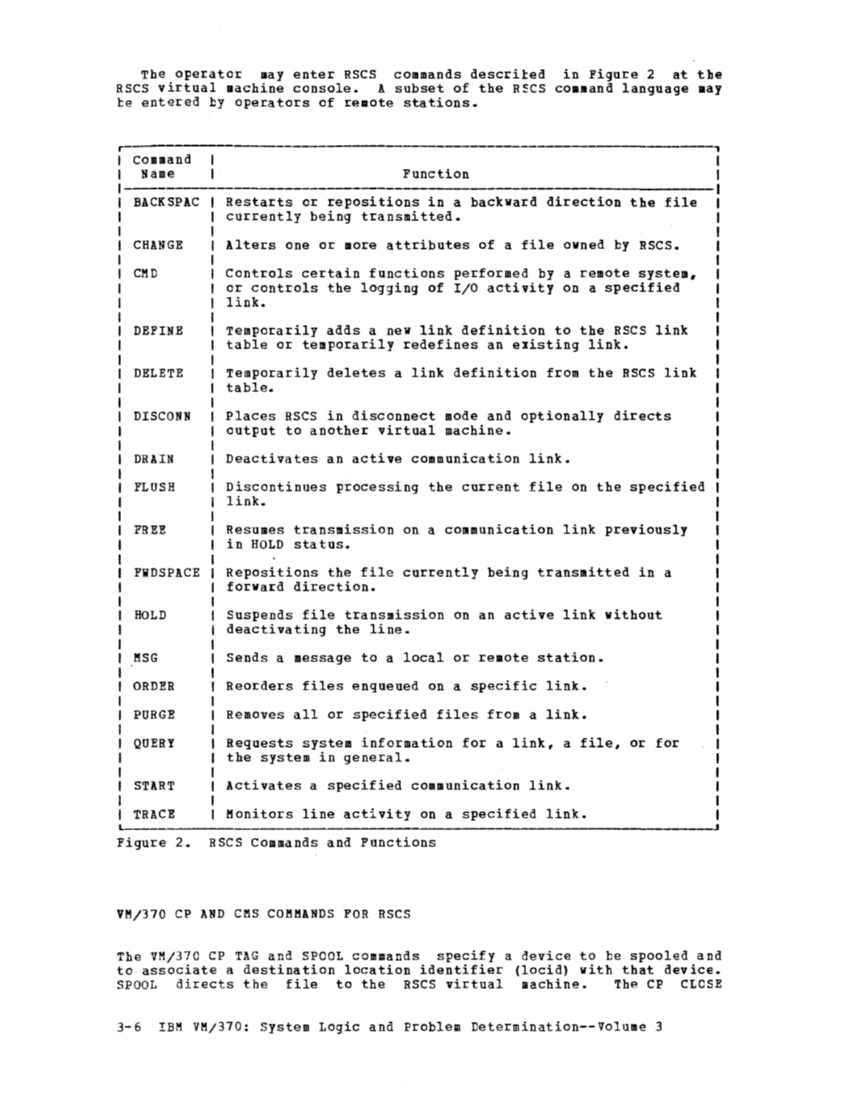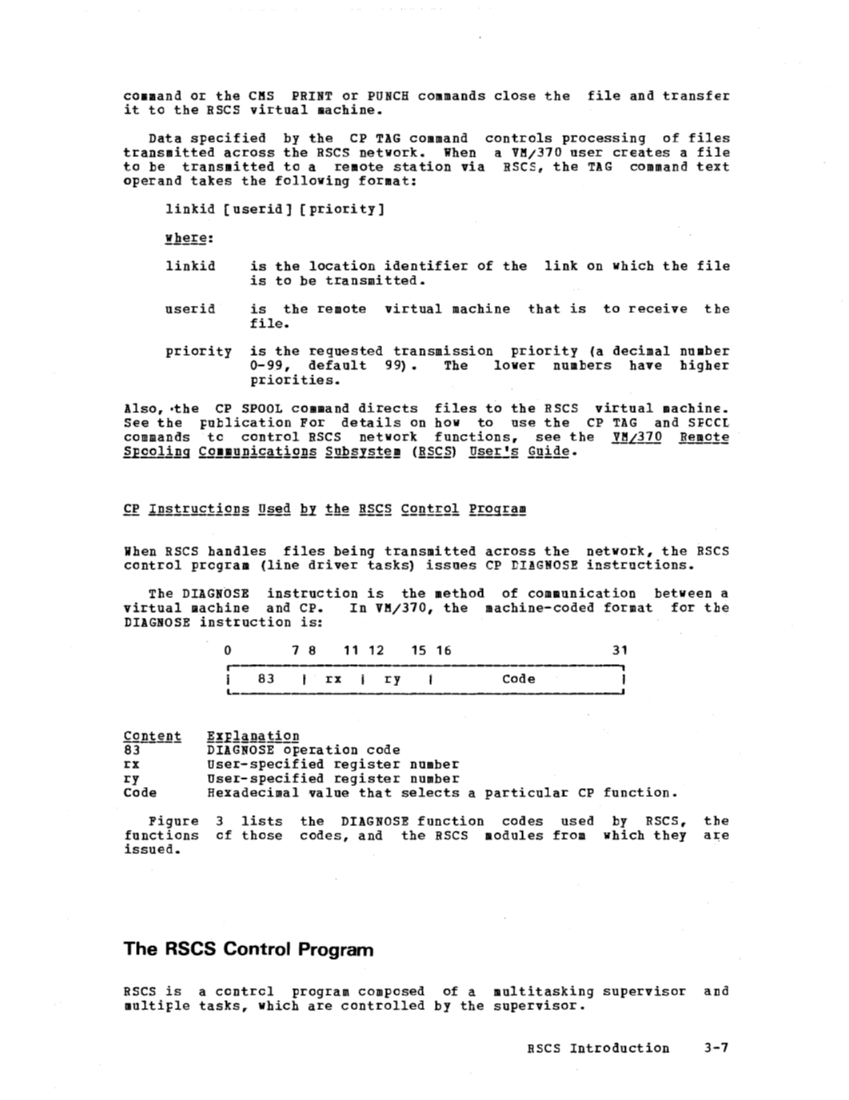The operator may enter RSCS commands descrited in Figure 2 at the RSCS virtual machine console. A subset of the •• and language .ay te entered by operators of remote stations.
command
Name FunctionBACKSPAC Restarts or repositions in a backward direction the file
currently being transmitted.
CHANGE Alters one or more attributes of a file owned byRSCS. CMD Controls certain functions performed by a remote system, or controls the logging of I/O activity on a specified
link.
DEFINE Temporarily adds a new link definition to theRSCS link
table or temporarily redefines an existing link.
DELETE Temporarily deletes a link definition from theRSCS link
table.DISCONN Places RSCS in disconnect mode and optionally directs
output to another virtual machine.
DRAIN Deactivates an active communication link.FLUSH Discontinues processing the current file on the specified
link.
FREE Resumes transmission on a communication link previously
inHOLD status. FWDSPACE Repositions the file currently being transmitted in a
forward direction.HOLD Suspends file transmission on an active link without
deactivating the line.MSG Sends a message to a local or remote station. ORDER Reorders files enqueued on a specific link. PURGE Removes all or specified files from a link. QUERY Requests system information for a link, a file, or for
the system in general.START Activates a specified communication link.
TRACE Monitors line activity on a specified link.
Figure2. RSCS Commands and Functions VM/370 CP AND CMS COMMANDS FOR RSCS The VM/370 CP TAG and SPOOL commands specify a device to he spooled and
to associate a destination location identifier (locid) with that device.SPOOL directs the file to the RSCS virtual machine. The CP CLCSE 3-6 IBM VM/370: System Logic and Problem Determination--Volume 3
command
Name Function
currently being transmitted.
CHANGE Alters one or more attributes of a file owned by
link.
DEFINE Temporarily adds a new link definition to the
table or temporarily redefines an existing link.
DELETE Temporarily deletes a link definition from the
table.
output to another virtual machine.
DRAIN Deactivates an active communication link.
link.
FREE Resumes transmission on a communication link previously
in
forward direction.
deactivating the line.
the system in general.
TRACE Monitors line activity on a specified link.
Figure
to associate a destination location identifier (locid) with that device.


























































































